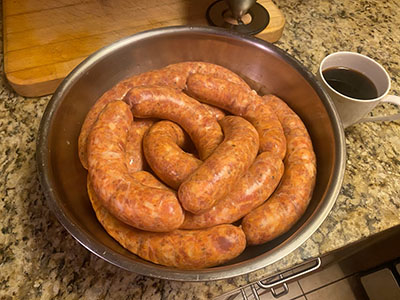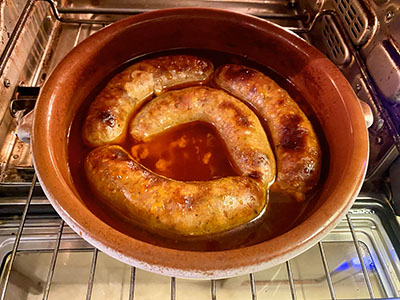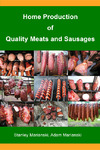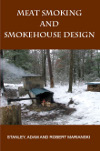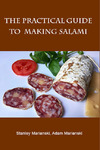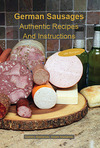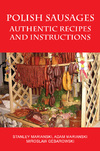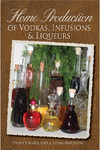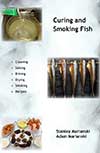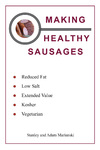Meats and Sausages
Fresh Sausages
Fresh sausages are embarrassingly simple to make; the procedure resembles preparing a meal. Although making fresh sausages is easy, it is still a great introduction to the art of sausage making. A fresh sausage is neither cooked nor smoked, which explains the ease of its production. The sausage will turn out great if fresh meat is selected and basic safety rules are obeyed. A fresh sausage will end up on a breakfast plate with fries and ketchup or on a grill in the backyard. Everybody knows how to make a hamburger; if you stuff ground and spiced meat into a casing, it becomes a sausage. Somehow, this classical definition has been twisted in recent years, and many ordinary meat dishes, such as meat patties, are also called sausages. The best example is McDonald’s® Sausage Mc Muffin, which is a meat patty served on a bun.
Manufacturing Process
Making a fresh sausage requires only a few steps:
- Meat selection. Any meat or meat combination can be used; pork, beef, pork and beef, poultry, wild game, and fish are suitable. Although the meat inside the stuffed sausage is red, it will become grey after cooking, like any other cooked meat, unless it is treated (cured) with Cure #1, which contains sodium nitrite. Cured meat remains red after heat treatment. However, adding sodium nitrite just because of color makes a little sense, and meat for fresh sausages is usually not cured.
- Cutting/grinding. Whether you chop meat with a knife or use a grinder is less important.
- Mixing. Salt and spices are added during this step. Some force is needed during mixing, so kneading is a better term as it will release some proteins from cut meat cells. Those proteins, mainly myosin and actin, dissolve in salt and moisture and become a sticky substance that binds all ingredients, including fat, together. Adding some water, for example 4 oz (120 ml) per 1 kg (2.2 lb) of meat, is a good idea as it facilitates mixing and stuffing and introduces more juiciness to the sausage. Most of this water will evaporate during cooking.
- Stuffing. A grinder with a stuffing tube, a self-contained piston grinder, or stuffing the mixture with fingers through a suitable funnel are suitable methods.
- Storing. A few days in a refrigerator, or longer in a freezer.
Fresh Italian sausages. The taste of the sausage depends on the selected meats and spices added to the mix. If you want to make Italian sausage, use fennel, the dominant spice in the recipe. Add red pepper or cayenne to create a medium or hot sausage version. Polish white sausage requires garlic and marjoram (optional); other sausages call for different spice combinations. The best advice is to use spices that you like; after all, you are the one who will eat the sausage.
Cooked Italian sausages. Fresh sausage is still raw meat and must be fully cooked before consumption. It can be boiled, fried, steamed, or baked. It can be parboiled in a skillet in water or with beer. Add water or beer to cover the sausage and parboil until the sausage is grey throughout, which takes about 10 to 15 minutes. Then, the sausage can be fried or grilled until nicely browned. Parboiling in beer will create a different flavor profile.
To learn more about making sausages see The sausage making process.
The Internet has millions of recipes that creative cooks invented. There are sausages with apples, arugula, pineapples, and other ingredients. Many large recipe-oriented websites must provide new content continuously to stay alive. They employ people with writing skills on a paid-by-article or recipe basis, and those creative persons look everywhere to find an original or rather unusual recipe. In our opinion, this has little in common with serious sausage making and rather fits into the general cooking category, which makes sense as many recipes are written by restaurant chefs who always think about cooking a meal.
Providing that fresh meat is obtained and the safety practices are implemented, there is little to worry about Salmonella, E. coli, or Clostridium botulinum as high heat during cooking takes care of those pathogens. Store fresh sausages in a refrigerator for 2-3 days or up to 2-3 months in the freezer. They must be fully cooked before serving.
| Name | Max Fat in % | Max Water in % |
|---|---|---|
| Fresh Pork | 50 | 3 |
| Fresh Beef | 30 | 3 |
| Breakfast | 50 | 3 |
| Italian | 35 | 3 |
More on Fresh Sausages can be found in the Code of Federal Regulations, § 319.140:
Code of Federal Regulations
Title 9: Animals and Animal Products
PART 319 - DEFINITIONS AND STANDARDS OF IDENTITY OR COMPOSITION
Subpart E—Sausage Generally: Fresh Sausage § 319.140 Sausage.
Except as otherwise provided in this section, or under the Poultry Products Inspection Act with respect to products consisting partly of poultry, sausage is the coarse or finely comminuted meat food product prepared from one or more kinds of meat or meat and meat byproducts, containing various amounts of water as provided for elsewhere in this part, and usually seasoned with condimented proportions of condimental substances, and frequently cured. Certain sausage as provided for elsewhere in this part may contain binders and extenders as provided in a regulation permitting that use in this subchapter or in 9 CFR Chapter III, Subchapter E, or in 21 CFR Chapter I, Subchapter A or Subchapter B. In addition to the binders and extenders referred to in the preceding sentence, the following two substances may also be used as binders in those sausages in which the use of such class of substances is permitted: pork collagen at up to 3.5% of the product formulation and transglutaminase enzyme at up to 65 ppm of the product formulation. Sausage may not contain phosphates except that phosphates listed in a regulation permitting that use in this subchapter or in 9 CFR Chapter III, Subchapter E, or in 21 CFR Chapter I, Subchapter A or Subchapter B may be used in cooked sausage. To facilitate chopping or mixing or to dissolve the usual curing ingredients, water or ice may be used in the preparation of sausage, which is not cooked, in an amount not to exceed 3 percent of the total ingredients in the formula. Cooked sausages such as Polish sausage, cotto salami, braunschweiger, liver sausage, and similar cooked sausage products may contain no more than 10 percent of added water in the finished product. Sausage may contain Mechanically Separated (Species) used in accordance with §319.6.
§ 319.141 Fresh pork sausage.
“Fresh Pork Sausage” is sausage prepared with fresh pork or frozen pork or both, but not including pork byproducts, and may contain Mechanically Separated (Species) in accordance with §319.6, and may be seasoned with condimental substances as permitted under part 318 of this subchapter. The finished product shall not contain more than 50 percent fat. To facilitate chopping or mixing, water or ice may be used in an amount not to exceed 3 percent of the total ingredients used.
§ 319.142 Fresh beef sausage.
“Fresh Beef Sausage” is sausage prepared with fresh beef or frozen beef, or both, but not including beef byproducts, and may contain Mechanically Separated (Species) used in accordance with §319.6, and may be seasoned with condimental substances as permitted under part 318 of this subchapter. The finished product shall not contain more than 30 percent fat. To facilitate chopping or mixing, water or ice may be used in an amount not to exceed 3 percent of the total ingredients used.
§ 319.143 Breakfast sausage.
“Breakfast sausage” is sausage prepared with fresh and/or frozen meat; or fresh and/or frozen meat and meat byproducts, and may contain Mechanically Separated (Species) in accordance with §319.6, and may be seasoned with condimental substances as permitted in part 318 of this subchapter. The finished product shall not contain more than 50 percent fat. To facilitate chopping or mixing, water or ice may be used in an amount not to exceed 3 percent of the total ingredients used. Binders or extenders may be added as provided in §319.140 of this part.
§ 319.144 Whole hog sausage.
“Whole Hog Sausage” is sausage prepared with fresh and/or frozen meat from swine in such proportions as are normal to a single animal, and may include any Mechanically Separated (Species) produced from the animal and used in accordance with §319.6, and may be seasoned with condimental substances as permitted under part 318 of this subchapter. The finished product shall not contain more than 50 percent fat. To facilitate chopping or mixing, water or ice may be used in an amount not to exceed 3 percent of the total ingredients used.
§ 319.145 Italian sausage products.
- (a) Italian sausage products are cured or uncured sausages containing at least 85 percent meat, or a combination of meat and fat, with the total fat content constituting not more than 35 percent of the finished product. Such products shall be prepared in accordance with the provisions of paragraph (a) (1), (2), or (3) of this section, and shall contain salt, pepper, and either fennel or anise, or a combination of fennel and anise. Such products may contain any or all of the optional ingredients listed in paragraph (b) of this section.
- (1) “Italian Sausage” shall be prepared with fresh or frozen pork, or pork and pork fat, and may contain Mechanically Separated (Species) in accordance with §319.6.
- (2) “Italian Sausage with Beef,” “Italian Sausage with Veal,” or “Italian Sausage with Beef and Veal,” shall be prepared so that fresh or frozen pork constitutes the major portion of the meat content requirement of this paragraph. Mechanically Separated (Species) may be used in accordance with §319.6. When pork muscle tissue is combined with beef or veal, or both, in the preparation of bulk-packed products, or patties, it shall be treated for the destruction of possible live trichinae in accordance with §318.10 of this subchapter.
- (3) “Italian Beef Sausage” or “Kosher Italian Beef Sausage” shall be prepared with fresh or frozen beef or beef and beef fat. “Italian Veal Sausage” or “Kosher Italian Veal Sausage” shall be prepared with fresh or frozen veal or veal and veal fat. Mechanically Separated (Species) may be used in accordance with §319.6.
- (4) Italian sausage products made in conformance with the provisions of paragraphs (a) (1), (2), and (3) of this section, and with paragraphs (b) and (c) of this section, may contain sodium nitrite or potassium nitrite in amounts not to exceed those allowed in a regulation permitting that use in this subchapter or in 9 CFR Chapter III, Subchapter E, or in 21 CFR Chapter I, Subchapter A or Subchapter B, provided that such products are labeled with the word “cured” in the product name, such as “Cured Italian Sausage.” The word “cured” shall be displayed on the product label in the same size and style of lettering as other words in the product name.
- (b) Optional ingredients permitted in Italian sausage products include:
- (1) Spices (including paprika) and flavorings.
- (2) Water or ice to facilitate chopping or mixing, but not to exceed 3 percent of the total weight of all ingredients including the water.
- (3) Red or green peppers, or both.
- (4) Dehydrated or fresh onions, garlic, and parsley.
- (5) Sugar, dextrose, corn syrup, corn syrup solids, and glucose syrup.
- (6) Monosodium glutamate and antioxidants in accordance with the chart of substances a regulation permitting that use in this subchapter or in 9 CFR Chapter III, Subchapter E, or in 21 CFR Chapter I, Subchapter A or Subchapter B.
- (c) If Italian sausage products are cooked or smoked, determination of compliance with the provisions of paragraphs (a) and (b) of this section shall be based on the uncooked or unsmoked product. The product before cooking or smoking shall contain no more than 3 percent water as specified in paragraph (b)(2) of this section. Product which is cooked shall be labeled with the word “cooked” in the product name, such as “Cooked Italian Sausage” or “Cooked Cured Italian Sausage.” Product which is smoked shall be labeled with the word “smoked” in the product name, such as “Smoked Italian Sausage” or “Smoked Cured Italian Sausage.” The words “cooked” and “smoked” shall be displayed on the product label in the same size and style of lettering as other words in the product name.

